FEATURE Winners announced in Mangrove Action Day Photographs
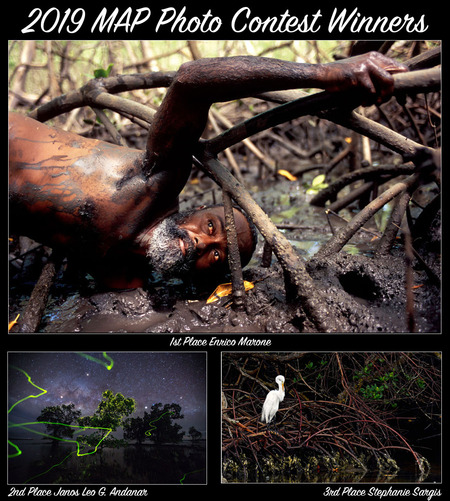
TITLE: Mangrove Crab Fisherman | Enrico Marone | Brazil
GLOBAL – Drumroll please … Our First Placewinner in the 2019 Mangrove Action Day Photography contest 'Mangrove Crab Fisherman'. Congratulations to Enrico Marone from Brazil for this stunning image of a community member in Bahia state using traditional methods of crab harvesting that have been used for generations, respecting fish stocks and maintaining their cultural heritage. 2nd Placeis 'Mangrove Fairies'. A magical long exposure shot of a group of mangrove trees covered in thousands of fireflies in Siargao Island. Congratulations to Janos Leo G. Andanar from Philippines for this beautiful scene. Our 3rd Placewinner is Stephanie Sargis from USA with her photo 'Vital Support'. Congratulations Stephanie for this intimate shot of a Great Egret sheltering from a passing storm in Ding Darling National Wildlife Refuge! Thank you to the more than 250 photographers who enter this year's contest. You made the judging extremely difficult by providing such excellent photos. We invite you to continue shooting, in anticipation of next year's contest. VIEW ALL PHOTOS AFRICA Cashing in on Kenya's mangroves
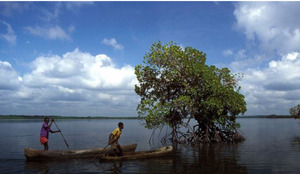
KENYA – About a third of the world's mangrove forests have been cut down in the past 40 years. That's dealt a huge blow to the environment, because mangroves are able to store up to five times more greenhouse gases than other trees. Communities in Kenya are now replanting mangroves. That's certainly good for the environment and it also helps them financially: They make money from selling carbon credits.LISTEN TO AUDIO AMERICAS The Blue Crab, Guardian of the Mangroves of Esmeraldas

ECUADORE – Cardiosoma crassum, known in Spanish as cangrejo azul, the blue crab, and also in English as the giant land crab or mouthless crab, is a terrestrial crustacean that feeds on the leaves of mangrove trees and their surrounding vegetation. The crab is particularly concentrated in the north of the province of Esmeraldas, in northern Ecuador.Sadly their reproduction is being hindered by the impact of human activities on the mangroves: intensive exploitation, mass tourism and the chemical products (pesticides and antibiotics) used in shrimp farming. In 2018, the Esmeraldas Blue Crab was recognized as a Slow Food Presidium, within the framework of the project “Empowering indigenous youth and their communities to defend their food heritage” financed by the International Fund for Agricultural Development (IFAD). READ MORE Local homeowners asked to plant salt-tolerant mangrove seedlings
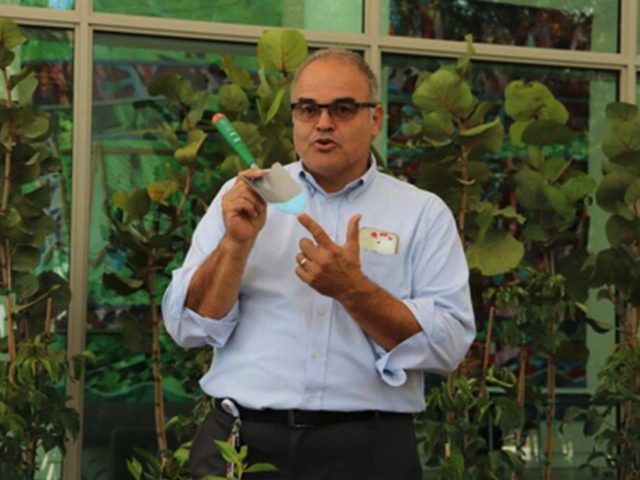
USA – Sea levels are rising and saltwater intrusion into our drinking water, septic tanks, landscape and agriculture is inevitable. Pinecrest Gardens-based environmental artist and University of Miami Professor of Practice Xavier Cortada wants residents to do something about it. In his new, socially charged “Plan(T)” project, Cortada is embarking on a public campaign to urge every resident across Miami-Dade County to plant a saltwater-tolerant mangrove seedling and white flag in their yard to start preparing for the future of sea level rise. “We need to start planting for the future,” Cortada said. “Our water’s edge is no longer at the coastline. It’s at your feet and at the aquifer, too. In the decades to come, much of our non-salt tolerant tree canopy will not survive the impacts of storm surge and saltwater intrusion, putting us at risk for significant loss of our green landscape, agriculture and shoreline in the Magic City.” READ MORE ASIA Mangrove ecosystems must be protected

SRI LANKA – A recent attempt by the Ministry of Fisheries and Aquaculture to acquire 9,197.8ha of mangroves from protected areas for aquaculture projects contradicts the Governments’ attempt to restore 10,000 ha of mangroves while destroying an important ecosystem, jeopardizing the livelihood of traditional fishing communities, the Young Zoologists’ Association said at a press conference recently. A Gazette Extraordinary issued under Clause 38 of the Fisheries and Aquatic Act on May 8, 2017 lists land to be released to the National Aquaculture Development Authority. These include 1300 hectares from Wedithalathivu, Mannar, 100 hectares from Kalamitiya, Hambantota, 8 hectares of Kirinda lagoon, over 40 hectares from Puttalam lagoon, 65 hectares from Talaimannar island, 28 hectares from Cod Bay, Trincomalee, 29 hectares from Powder Bay, 25 hectares from Galle Harbour, including reserved forests, conservation forests, national reserves and sanctuaries, and other stated forests, where the protected status will be removed. “Talaimannar has Venkalai Sanctuary on one side and Adam's Bridge Marine National Park on the other. It’s not clear as to where these lands will be taken from,” said Enviornmentalist and Attorney-at-Law Jagath Gunawardana speaking at the conference. The observations were attached from the Ministry of Fisheries and Aquatic Development to a Cabinet Memorandum containing the President’s proposals. According to him, these observations, contradict each other. READ MORE NO new coal power – protect local people and wildlife!

BANGLADESH – The Sundarban mangrove forests are the largest and most biodiverse in the world. The ecosystem is home to Bengal tigers, chital deer, dolphins and critically endangered northern river terrapins. UNESCO declared the mangrove forest a World Heritage Site in 1997. Yet the government of Bangladesh is pushing ahead with building a massive coal-fired power plant just a few kilometers away in Rampal. Exim Bank of India has already granted a loan of of 1.6 billion US dollars for its construction. The construction work would destroy mangroves, and thus tiger habitat. The operation of the plant would heat and pollute the water of the Passur river, and many fish and dolphins would not survive in those conditions. Accidents involving coal barges could cause untold damage. The coal-fired power plant would exacerbate the climate crisis and its grave impact on Bangladesh in the form of floods, sea level rise and cyclones. READ MORE For one Indonesian village, mangrove restoration has been all upside

INDONESIA – Harniati keeps her youngest daughter close as the pair walk along the footpath from this village to the southeast coast of Lombok Island. For years, the people of Paremas have walked down to the beach to scoop up fish and other sea life left behind in pools by the falling tide. “It’s easier to search around here now,” she says, dressed in a fern-colored hijab and clutching an old paint bucket to collect the catch of the day. “Even for the kids.” Until relatively recently, Harniati’s coastline was shielded from storm surges and deposits of plastic trash by a large mangrove forest. But demand for firewood in the community meant the Paremas mangrove was slowly depleted. Around a decade ago, the local government and environmental NGOs began work on building a consensus in the community: that the mangrove needed restoring. Everyone came around to the idea; then they got to work replanting the Paremas mangrove. The result has brought surprising changes. READ MORE Sri Lanka wields mangroves, its tsunami shield, against climate change

SRI LANKA – About 140 kilometers (87 miles) south of Colombo, the Sri Lankan capital, lies the coastal town of Koggala. Koggala and neighboring Unawatuna, one of Sri Lanka’s most popular tourist destinations, had for decades experienced significant environmental destruction: from sand extraction to mangrove clearance to reef destruction — all resources on which the local communities were highly dependent. Then the Boxing Day tsunami of 2004 struck, destroying lives and property on a scale that the Indian Ocean island had never before experienced. As part of the post-tsunami recovery, new mangrove regeneration and conservation efforts were carried out along the more ravaged areas of the southern coast. In Galle district, where Koggala and Unawatuna are located, a multi-stakeholder approach was adopted with public-private partnerships to drive replanting efforts. Long after the NGOs and the government moved on, however, it’s the local community that’s responsible for the success of the “mangrove green belt” that’s sprouted up along the southern coast today, locals say. READ MORE Massacre of the Mangroves

INDIA – For decades, the 4,265 sq. km mangrove belt, spread over the Sundarbans delta and the reserve forests of South 24 Parganas in West Bengal, has acted as a line of defence for its 2.5 million people against coastal erosion, tidal onslaughts and natural calamities. While the scars of an expanding human footprint over the years are indisputable, environment watchdogs have spotted and put a stop to fresh violations in this ecologically sensitive region-it seems just in the nick of time. Hundreds of acres of the Sundarbans mangroves-one of the world's largest such forests-are feared to have been lost due to illegal felling carried out for government schemes aimed at providing housing and farmland to the poor. This has happened under the patronage of the local administration, allegedly to benefit Trinamool Congress (TMC) loyalists. READ MORE A decade dedicated to mangroves
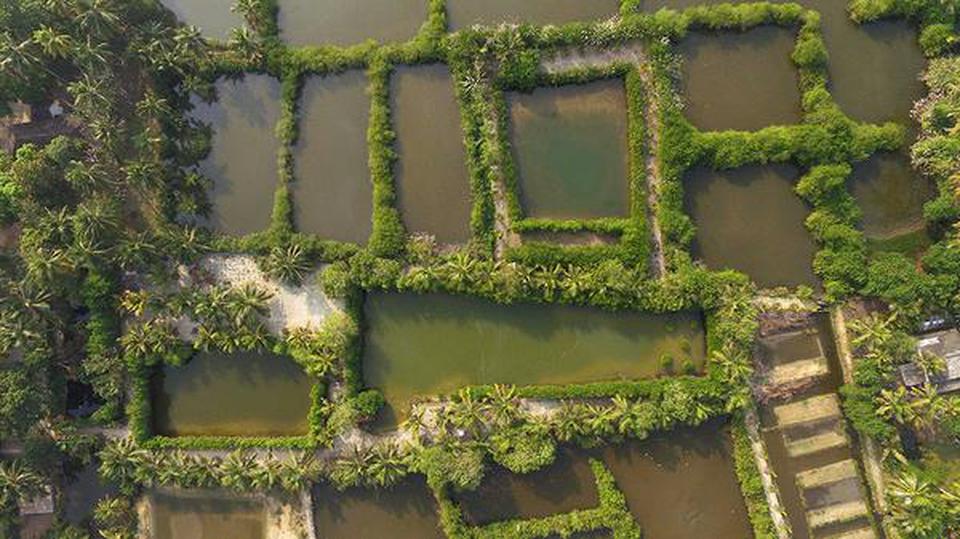
INDIA – While the State witnessed a rapid decline in mangroves in recent decades, there are a few who still care for the lush green trees with tangled roots, which can help mitigate climate change by storing huge amounts of carbon dioxide and form the first line of defence for coastal communities. When Anil Kumar M.R. retired as an executive engineer from the Agriculture Department in 2011, he wanted to do something different. After mulling over a few ideas, he finally decided to develop a mangrove-based integrated farming project in the family-owned five acres of ‘wasteland’ at Devikulangara, near Kayamkulam. After spending almost a decade planting and conserving, Mr. Kumar and his wife Mini K. Rajan, former additional director, Agriculture Department, are now proud owners of a unique ‘model mangrove forest’, spread over 2.5 acres housing a large number of mangrove trees belonging to nine different species, including Rhizophora mucronata, Bruguiera cylindrica, and Ceriops tagal. READ MORE How bio-restoration is helping revive degraded mangroves in Sunderbans
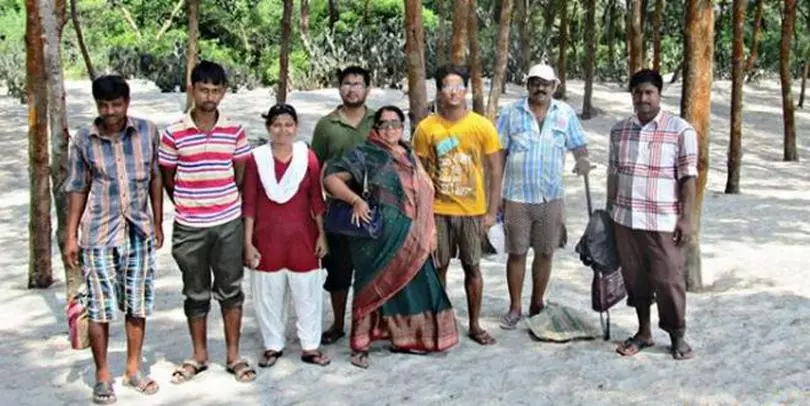
INDIA – A new technology developed by Indian scientists for ecological restoration is helping in a revival of mangroves degraded due to rising sea levels, climate change and human intrusion in the Sunderbans in West Bengal. Ecological restoration means reviving native ecosystem in degraded areas while maintaining the diversity of original flora and fauna through regeneration but bringing down the regeneration period to 4 to 5 years. Natural recovery takes a longer time. The restoration technology, developed by Krishna Ray (West Bengal State University, Kolkata) and Sandip Kumar Basak (Sarat Centenary College, Dhaniakhali), consists of plantation of native salt-tolerant grasses and a diverse set of carefully identified mangrove species in different zones of degraded mangrove patches. It also involves the use of growth-promoting bacteria. READ MORE Breathing new life into the mangroves
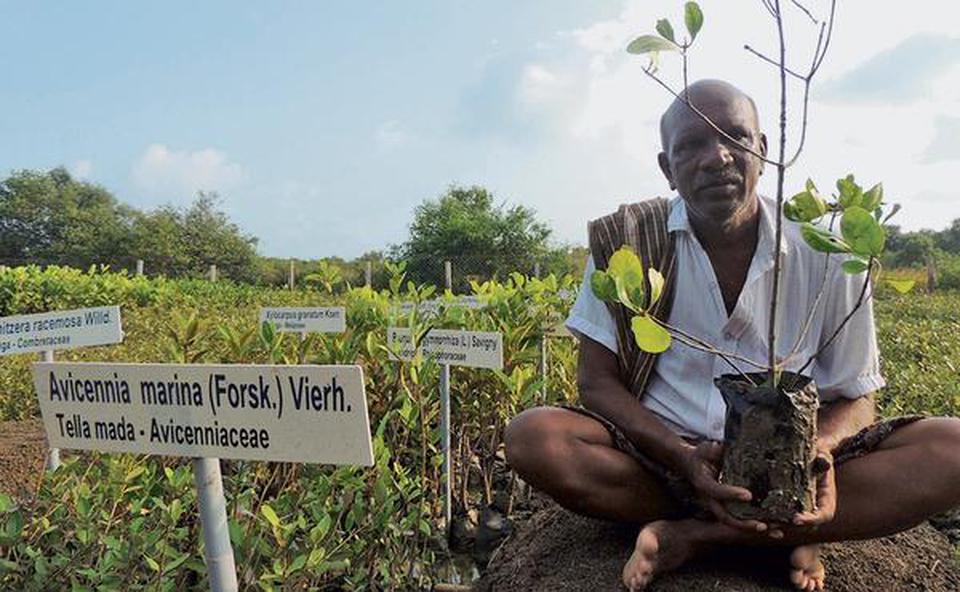
INDIA – A Mangrove Genetic Resources Conservation Centre has been developed in the core area of the Coringa Wildlife Sanctuary (CWS) in the Godavari estuary with 25 species collected from various places across the country, including the Sundarbans, Bitarkanika in Odisha, and the Krishna Wildlife Sanctuary and Coringa in Andhra Pradesh. Scientists of the M.S. Swaminathan Research Foundation (MSSRF) spared no effort to make it happen. A portion of the area (around one acre) has been set aside for the CWS for the centre, which is being funded by the United Nations Development Programme (Global Environmental Finance). The East Godavari River Estuarian Ecosystem Foundation (EGREE) of the State Forest Department has been roped in to help the MSSRF develop the centre. READ MORE OCEANA Newly Discovered Corals In Mangrove Lagoons Can Withstand Extremes

AUSTRALIA – The Great Barrier Reef has undergone a progressive decline since the 1980s, including its worst-ever mass bleaching in 2016. Up until now, lots of research on the Great Barrier Reef has focused on areas where extreme conditions, such as excessive heat, are dampened. Corals cannot typically withstand sudden increases in temperature, so protected 'pockets' of corals that do not receive the full effects of a heat wave could help repopulate devastated reefs nearby. However, these 'pockets' will not be a permanent savior to Great Barrier Reef corals once the heat waves become excessive within them, too. "…even the ‘robust reefs’ might be wiped out in the not-too-distant future – unless we really get serious right now about mitigating global warming," explains Dr. John Alroy, Professor at Macquarie University in Sydney. READ MORE LAST WORD Hello, My name is Jayantha Wijesingha, the convener of Rainforest Protectors of Sri Lanka and the coordinator of Rainforest protectors Trust, a volunteer organization committed to preserve our rainforests since 2012 of its inception. We later diversified in to protecting various other ecosystems including Wetlands and mangroves. Currently we are trying to protect "Muthurajawela" which has both Freshwater and salt water mangroves but are fast loosing grounds due to high commercial value of the lands nearby. Disappointed to say we don't have any committed organization in Sri Lanka dedicated to protecting mangroves. We on the other hand have been the leader in getting Oil Palm expansion banned recently and have achieved numerous milestones in conservation. Our action have saved nearly 10K acres of forests and lands during the last 1 year that were to be deforested. Since we got involved with Muthurajawela 2 years ago, we are closely working with Department of Wildlife Conservation and other stakeholders to prevent mangrove deforestation, encroachment and illegal filling of wetland & lagoon. However, our task is very challenging with absolutely no support coming currently. Wedithalathivu is a yet another mangorve forest that is under threat which we need to pay attention to. We have lost most of our mangrove forests already and we need o act now. As a volunteer movement this is impossible right now unless we get some significant support coming from an organization like yours to deal with it and make it more sustainable. We have protected Most of Muthurajawela with our activism work during the last two years but unable to protect the whole system without support. Below are some recent videos we did in Muthurajawela https://www.facebook.com/watch/?v=2302768486427287
https://www.facebook.com/watch/?v=399432254043459 Please do get in touch if you think you can help this tiny island preserve its remaining mangrove forests. Thanks & Regards,
Jayantha Wijesingha
http://www.RainforestProtectors.org
http://www.RainforestProtectorsTrust.org
Like this newsletter?
Pease consider donating to MAP to keep it going.
Giving could never be easier | ACTION ALERTSPETITION – NO new coal power – protect local people and wildlife!
SIGN OUR PETITION Help stop the advance of oil palm plantations in Gabon!
SIGN THE PETITION LAST CHANCE TO VOTE FOR YOUR FAVORITE PHOTO Mangrove Action Day Photography Voting underway. CLICK HERE 69 million tons of carbon stored thanks to mangrove restoration, as demonstrated by the new Mangrove Restoration Map VIEW MAP HERE Keep loggers out of Selous Game Reserve!
Tanzania’s government is moving ahead with its plans for a hydroelectric dam in Selous Game Reserve. A huge swath of the UNESCO World Heritage site and habitat of iconic African wildlife would suffer irreparable damage. 1,500 km2 – an area the size of London – has just been opened to logging. Please help us protect Selous. SIGN PETITION Don't trash coral reefs for the cruise industry! – TAKE ACTION Sea turtles or condominiums?
Sand mining and construction work would wipe out a marine biodiversity hotspot and destroy the livelihoods of local people, who have not been consulted. Please SIGN! Save Penang! Reject the 3-Islands Reclamation!
The lack of public consultation and detailed information about the project is shocking in view of the size of proposed reclamation which is 4,500 acres or 7 square miles
PLEASE SIGN
Save Pulau Kukup National Park – second largest mangrove island in the world. Sign The Petition Like this newsletter? Pease consider donating to MAP to keep it going. Giving could never be easier 
UPCOMING EVENTS 2019 Environmental Science and Climate Change Conference September 10-11, 2019
 REGISTER NOW REGISTER NOW 
Restoring The Natural Mangrove Forest
Watch movie 
Community Based Ecological Mangrove Restoration in Rufiji Delta VIEW VIDEO Video: Mangroves for the Future – A look bacK. As the latest phase of Mangroves for the Future (MFF) draws to a close, this video highlights some of the project’s most successful initiatives – from local women supporting national park management in Viet Nam to an island in the Maldives that has become a model for waste management, and everything in between. View Here WANT TO GET INVOLVED?
Follow and Join MAP!
   
Like this newsletter? Pease consider donating to MAP to keep it going. Giving could never be easier 

VOLUNTEER OPPORTUNITY 
MANGROVE ISSUES Want to learn more about mangroves?
Our short presentation will give you a better understanding of the issues we are working to solve. WATCH PRESENTATION What is CBEMR? Easy to follow fact sheet – CLICK HERE What is EPIC? – The Ecosystems Protecting Infrastructure and Communities (EPIC) project: the role of ecosystems as protective barriers against climate induced hazards MANGROVES APP AVAILABLE
A pictorial field guide for easy identification of various mangrove species and learning about the mangroves ecosystem. CLICK HERE View MAP’s uploaded Videos at MAPmangrover’sChannel
Question Your Shrimp Consumer/Markets Campaign!
WATCH VIDEO Mangrove Restoration in Asia – Watch Short Video The Value of Mangrove Forests View Video CBEMR Experience Exchange MAP 2017 English Subtitles
VIEW THE VIDEO Mangroves: Guidebook to Malaysia – Click Here
Mangrove rehabilitation in Asia – Local Action and cross-border Transfer of Knowledge for the Conservation of Climate, Forests and Biodiversity VIEW VIDEOS HERE SHARE MAP'S VISION
CLICK HERE to watch short introductory video. Together we can work "at the roots of the sea". Our short documentary, Reducing the Risk of Disaster through Nature-Based Solutions : Mangroves

Exclusive Interview with Alfredo Quarto, Co-Founder and Executive Director of Mangrove Action Project – See more
Marvellous Mangroves Curriculum The Marvellous Mangroves Education Forum is an online hub for those utilizing the Marvellous Mangroves (MM) Curriculum. It gives students, teachers and anyone interested in mangroves, the opportunity to learn and share ideas themed around the curriculum, to connect and communicate with others around the globe whilst exploring mangroves from your computer or on the go. VISIT 
The award-winning Marvellous Mangroves (MM) curriculum educates children on the importance of mangroves and their ecological functions, teaching them about modern challenges and mechanisms for sustainability. VIEW VIDEO Marvellous Mangroves Curriculum in Bangladesh – WATCH VIDEO
MARVELLOUS MANGROVES IN BRAZIL
En Portuges 
Marvellous Mangroves – A Curriculum-Based Teachers Guide. FOR MORE ON MAPs AWARD WINNING CHINA MANGROVE CURRICULUM VISIT

VIMEO SHOW
VISIT OUR "MM" WEBPAGE Check out our presentation for more details on Marvellous Mangroves Read this 10 page history of the development of MAP’s educational curriculum VIEW DOCUMENT
Article in Canada's Green Teacher Magazine – Read More
Like this newsletter? Pease consider donating to MAP to keep it going. Giving could never be easier 
Green Planet Fundraising Assists MAP – LEARN MORE
Volunteer Opportunities with Mangrove Action Project CLICK HERE
"Question Your Shrimp" Campaign Question Your Shrimp- Don't Buy or Sell Imported Tropical Shrimp! Sign the Petition Learn more about the affects of the shrimp industry on mangroves by visiting our blog
Editor’s Note: Mangrove Action Project’s Executive Director, Alfredo Quarto was interviewed about shrimp by Green Acre Radio’s Martha Baskin
LISTEN TO INTERVIEW Sign the Consumer's Pledge to avoid imported shrimp
Not yet a MAP News subscriber?
Click here to subscribe. Note to Our Readers: We strive to keep active links in our newsletter. However, due to circumstances beyond our control, occasionally links to stories may become broken. If you find a link to a story is not functioning, please cut and paste the headline into your browser search bar. In most cases you should be able to locate the original story.
|

























